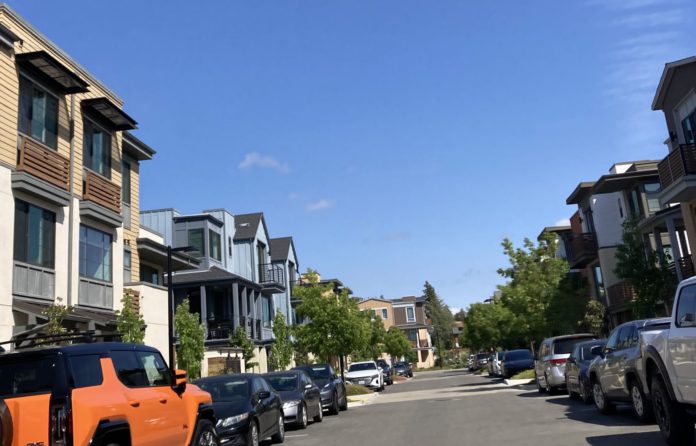
The Los Gatos Community Alliance applauds the work Grosvenor has done in reimagining their development plans for Phase 2 of the North 40. We recognize how far the proposal has come from its original concept—just 200 units with 40 affordable and a hotel.
The current plan includes 450 housing units, with a total of 77 units proposed as affordable—67 of which are attributed to Eden Housing, a separate developer operating on land deeded to them.
The project also includes a generously sized central public open space, open to all, and a new public pavilion designed to be adaptable for a variety of civic, community, and retail uses. In addition, there is 15,000 square feet of commercial space intended to create vibrancy and a sense of place.
We are pleased with this progress—but we are not satisfied.
The Phase 2 proposal still includes only 10 affordable units integrated into the mixed-income portion of the Grosvenor development, compared to 373 market-rate units. That’s just 2.7% affordable housing based on the Town’s Below Market Price (BMP) Ordinance—far short of the 20% standard. This low figure represents a missed opportunity, especially considering that the 2040 Housing Element designates this land as one of the most critical sites for affordable housing in Los Gatos.
The Phase 2 Proposal still includes only 10 affordable units integrated into the mixed-income portion of the Grosvenor development
Let’s be clear: the Town’s certified 2040 Housing Element planned for 464 units on this site, 253 of which were expected to be affordable to very-low and low-income households. The Eden Housing portion accounts for just 67 of these, and the additional 10 proposed by Grosvenor brings the total to only 77. This is a significant shortfall.
Because of this gap, the Town will now be subject to the State’s “No Net Loss” requirement, which obligates the Town to rezone additional land elsewhere — land that must also meet the State’s strict standards for realistic redevelopment — to make up for the loss of affordable capacity.
Grosvenor also claims that they meet and exceed the minimum density requirement of 30 dwelling units per acre. However, this is based on a redefinition of how density is calculated. Instead of using the gross acreage, as clearly required in the 2040 Housing Element certified by HCD—and applied consistently across all parcels in the site inventory—Grosvenor uses net acreage, a smaller figure that inflates their stated density. Based on the legally required calculation using gross acreage, 464 units are required to meet the minimum density standard — a figure Grosvenor narrowly misses with their 450-unit proposal.
To be fair, Grosvenor has been transparent about concerns with affordability assumptions. In a September 27, 2022 letter to the Town, they warned that the Town’s goal for affordable units could not be met under the then-current zoning of 20 dwelling units per acre. They suggested that increasing the density to 30 units per acre might allow for up to 130 affordable units if market conditions allowed them to build more than the 200 units originally planned. The Town went beyond that, increasing allowable density to 40 units per acre.
Grosvenor and Eden Housing then added 250 more units to the plan—but still propose only 77 affordable units, well below both the original 130-unit goal and the 253-unit expectation formalized in the 2040 Housing Element.
The Eden Housing component, it’s important to note, is a separate project subject to its own development timeline and dependent on securing a complex patchwork of public and private funding. Its success is not guaranteed, and it should not be used to mask the lack of affordability in the core Grosvenor development.
Grosvenor has also made much of the fact that this is not a Builder’s Remedy project. But this claim deserves careful scrutiny. Their position rests on a novel and questionable legal theory: that the project is governed by the January 31, 2023 Housing Element—a version that was never certified by the California Department of Housing and Community Development (HCD) and therefore never went into effect. In fact, HCD informed the Town of its noncompliance prior to April 18, 2023, the date Grosvenor’s application was deemed complete.

If Grosvenor’s legal theory were valid, it would mean no project in Los Gatos during that period could qualify for Builder’s Remedy status—something we know is not true. Other projects have invoked that status. Grosvenor should be accurate about the compliance status of their 383-unit development. Claiming compliance with a Housing Element that doesn’t comply with State Housing Element Law is a real head-scratcher and makes us wonder why they would make such an outrageous claim. We’ll save that for another day.
So what will make us satisfied? Build more affordable housing. That has always been the primary goal. We would like to see at least 130 very-low and low-income units — an increase of 53 units over the 77 currently proposed. This is a number that is more than reasonable to achieve, especially given the material increase in market-rate housing that will be developed across Phase 1 and Phase 2.
Yes, Grosvenor has come a long way. But incremental improvement is not enough in the face of a statewide housing crisis. This project was always meant to be a cornerstone of our Town’s affordable housing strategy. It’s time for Grosvenor and the Town to fulfill that promise.
We are pleased. But we are not satisfied.









